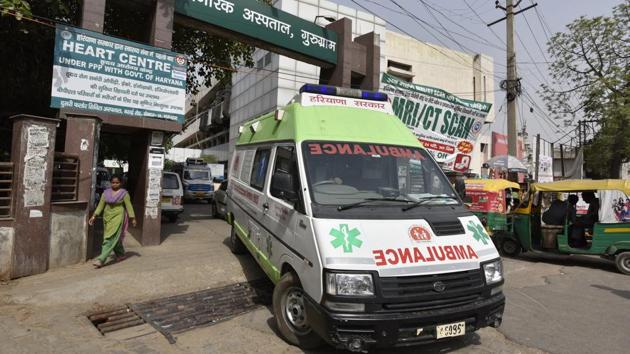Untimely referrals, lack of ambulances a risk for pregnant women in Gurugram
According to WHO guidelines, Gurugram should have 25 ambulances. It currently has a total of 19.
On April 25, 2017, 29-year-old Sonia Dhull, a resident of Daulatabad village in Pataudi, delivered a baby in the ambulance in the premises of Civil Hospital. According to her husband Jaidev, she was made to wait for two-and-a-half hours before doctors at the Outdoor Patients Department (OPD) examined her. Both doctors, who examined her, chose to refer her to Delhi’s Safdarjung Hospital, even though she had allegedly started to crown, with a fist of the infant also out.

Jaidev also alleged that there was a delay in ambulance services. “We received no assistance from the staff in locating an ambulance. When we finally located one and started sorting out the matter, she gave birth in the vehicle itself,” Jaidev said. Her infant died.
A few days after this incident, another woman gave birth to a boy in an ambulance near the Sirhaul toll plaza on the Delhi-Gurgaon national highway after doctors at the government hospital referred her to Safdarjung Hospital, citing unavailability of an ultrasound machine.
Salman, the emergency medical technician (EMT) who helped Sonia deliver, said that ambulance deliveries in the district are very common. “I have helped women in ambulance deliveries at least four times this year. Such incidents happen due to untimely, last minute and large number of referrals. The hospital also doesn’t take into account the amount of time it takes to reach Safdarjung. It should normally take half-an-hour, but due to the heavy traffic, it ends up taking more than an hour,” he said.
According to the hospital staff, the number of advanced life support (ALS) ambulances in the district, used to transport patients referred to a higher medical facility, is disproportionate to the number of referrals.
Civil Hospital – the district’s largest government hospital – referred 400 pregnant women till April this year to other hospitals, mainly Safdarjung in New Delhi. In 2017, a total of 3,904 patients were referred by the hospital to the Safdarjung hospital. The district has only four ALS ambulances, equipped with high-level medical equipment, which transport patients from the district hospital to Safdarjung, a health department official said.
“The number of referrals by the hospital is high, and we only have four advanced life support (ALS) ambulances which are used to transport patients to the referred hospitals. When the number of referrals is high, we face a serious shortage of ambulances,” said Devender Kumar, the ambulance in-charge.
According to hospital authorities, the number of referrals is high as there is a shortage of advanced medical equipment at the hospital.
Added to this, health officials said, two of the four ALS ambulances are often sent to cater to VVIPs and VIPs who enjoy Z and Y security covers. Hence, hardly enough of them are left to cater to emergency medical cases.
The World Health Organisation’s guidelines say there should, at least, be one ambulance for one lakh people. Since 2011, the city’s population is believed to have increased at the rate of 1.4 lakh people a year to touch 25 lakh currently. Gurugram falls below the WHO standard with a total of 19 ambulances – four ALS and 15 basic life support (BLS).
Services provided under Haryana government’s referral transport scheme – the National Ambulance Services (NAS) — include transportation of a patient from a medical facility to a higher medical facility. According to the scheme’s website, the state has 234 BLS ambulances, 43 patient transport ambulances and 58 ALS ambulances. However, a 2011 report by the School of Public Health Post Graduate Institute of Medical Education and Research, Chandigarh, observed that the quality of emergency referral transport services in the state needs improvement in terms of response time, basic equipment, supplies and paramedic personnel. The study, exploring factors responsible for high maternal mortality in India, found that most ‘death cases’ belonged to high-risk, socially disadvantaged groups who had either not gone to the hospital or had gone too late.
According to the NAS website, in 2017, the average time taken by a state ambulance in dropping a patient at a health facility was 38 minutes. The state ambulance service transported 1,29,461 patients from one healthcare facility to another higher facility in 2017 .
Sandeep, one of the ambulance drivers, has been transporting referred patients from the hospital since the past three years. He transports three to four patients in a day, and each trip takes around one-and-a-half hours to cover. “Vehicles hardly give way to the ambulance, which is why it ends up taking so long. No one follows traffic rules for ambulances,” Sandeep said.
Dr Gulshan Rai Arora, civil surgeon, Gurugram, said, “The health department will assess the situation to find out if more ambulances are required.”



